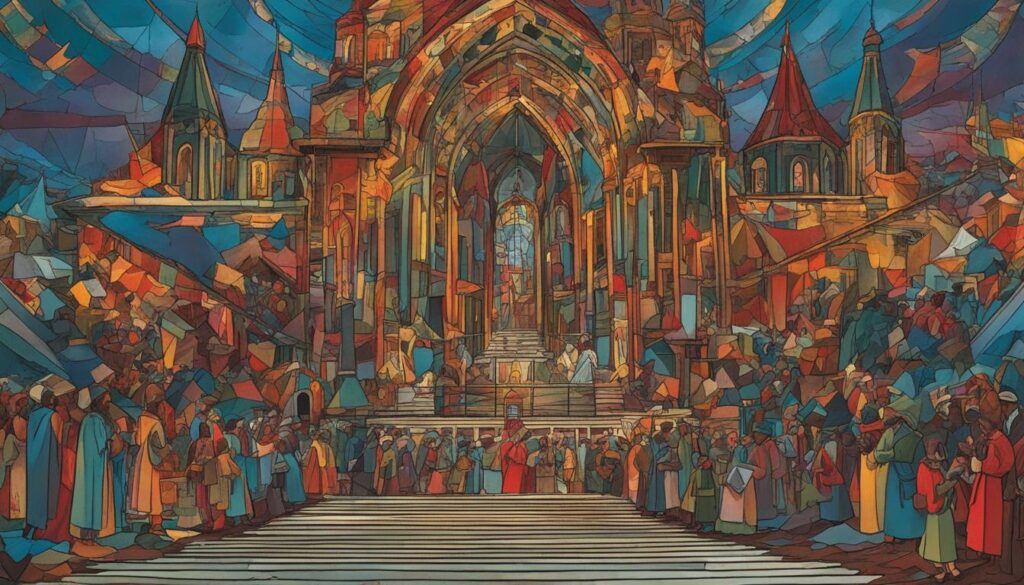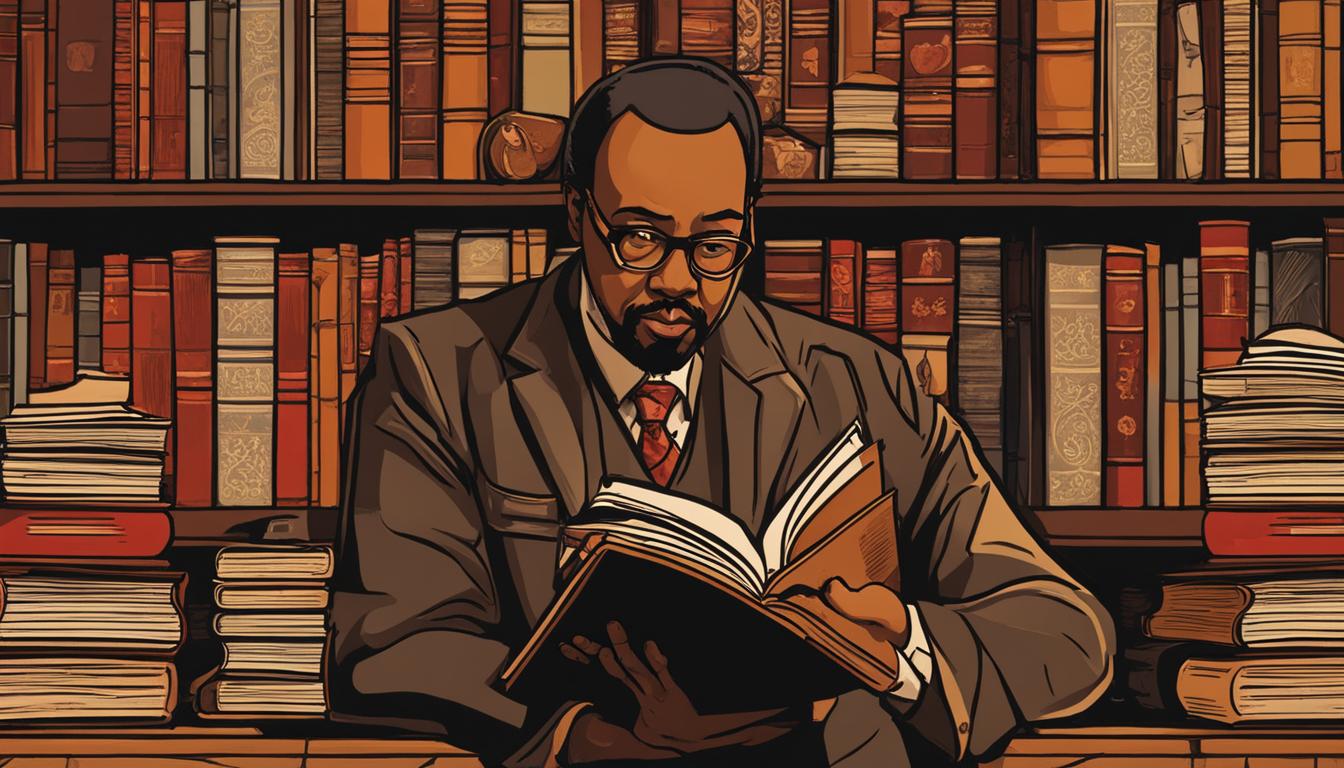If you’re a fan of historical fiction, then James McBride’s Miracle at St. Anna is a must-read. The book summary follows the journey of four black American soldiers during World War II as they become trapped behind enemy lines in Italy. The story is a gripping tale of war and redemption, exploring themes of sacrifice, loyalty, and heroism.
James McBride is a prolific author whose work has earned him numerous accolades. He is known for his unique storytelling style and his ability to weave historical events into compelling narratives, as he does with Miracle at St. Anna. In the following sections, we will delve deeper into McBride’s biography, the plot and setting of Miracle at St. Anna, its main characters, themes explored, historical context, narrative structure and writing style, critical reception, key takeaways, impact and adaptations, and similar books to recommend.
About the Author, James McBride
James McBride is a renowned American author, musician, and screenwriter. He was born in 1957 in Red Hook, Brooklyn, to an African-American mother and a white father. Growing up, McBride struggled with his biracial identity, but his experiences would later shape his writing career.
McBride attended Oberlin College in Ohio and later earned a degree in journalism from Columbia University. He worked as a staff writer for The Boston Globe and People magazine before transitioning to writing books.
McBride is the author of several critically acclaimed books, including the National Book Award-winning novel The Good Lord Bird and the New York Times bestseller The Color of Water. He has also written screenplays, including the adaptation of his own novel Miracle at St. Anna, which was directed by Spike Lee.
Despite his success, McBride remains humble and dedicated to his craft, constantly pushing the boundaries of what it means to be a writer. His unique perspectives on race, identity, and history have made him a beloved figure in the literary world.
Overview of Miracle at St. Anna
To understand the context of the story in Miracle at St. Anna, it’s essential to dive into the plot and setting. The novel takes place during World War II in Italy and follows four African American soldiers of the 92nd Infantry Division as they become trapped behind enemy lines. One of the soldiers, Private First Class Sam Train, discovers an Italian boy who has been separated from his family and decides to take him with them. As they journey through the war-torn country, the soldiers face numerous challenges and confront their own beliefs and prejudices.
“The novel takes place during World War II in Italy and follows four African American soldiers of the 92nd Infantry Division as they become trapped behind enemy lines.”
The complexity of the plot is mirrored by the gritty and emotionally charged setting of the novel. The soldiers navigate through a landscape marked by violence, poverty, and political strife, all while attempting to complete their mission and protect the young boy in tow. James McBride’s vivid descriptions of the Italian countryside and the horrors of war create a powerful backdrop for the story of courage and redemption.
Main Characters in Miracle at St. Anna
Set during World War II, Miracle at St. Anna follows the lives of four African American soldiers who become trapped behind enemy lines in Tuscany, Italy. The novel primarily centers on these four men and their experiences as they fight to survive amid the chaos of war.
| Character Name | Description |
|---|---|
| Stamps | The sergeant of the group, and a natural leader despite his young age. |
| Bishop | A man haunted by his past, struggling with the harsh realities of war and his own inner demons. |
| Train | The most outspoken member of the group, with a fierce determination to fight against injustice. |
| Puddles | The most naive and innocent of the group, with a deep love for his mother and a desire to honor his family. |
Each of these main characters brings a unique perspective to the story, with their own fears, strengths, and flaws. Through their experiences, McBride showcases the complex and often tragic realities of war, exploring themes of loss, sacrifice, and redemption.
“McBride masterfully captures the complexities of these four soldiers and their experiences during World War II. Through each of their unique stories, he paints a vivid picture of the horrors of war and the hope that can arise even in the darkest of times.”

Themes Explored in Miracle at St. Anna
In Miracle at St. Anna, James McBride explores powerful themes that resonate with readers long after they’ve turned the last page. One of the most prominent themes is war, which is depicted as violent, chaotic, and senseless. McBride also examines themes of redemption and sacrifice, which play out in various characters’ struggles to reconcile their past actions and find a path forward. Through his storytelling, McBride shows readers that even in the midst of war’s horrors, there is always a glimmer of hope and a chance for redemption.
War is a recurrent theme throughout the book, and it is shown in all its brutality – the violence, the fear, and the sense of loss that comes with it. Through the circumstances of the war, the characters experience a range of emotions and behaviors – anger, hopelessness, desperation, and defiance. The challenge for them is how to reconcile their sense of duty with their own moral compass amidst the chaos and destruction that surrounds them.
Another key theme is the idea of redemption. In McBride’s writing, redemption is portrayed as a journey of self-discovery, one that involves confronting past traumas and facing the consequences of one’s actions. Characters must come to terms with their own guilt and their own capacity for both good and evil. We see this in the transformation of many characters over the course of the book, as they take steps towards redemption and forgiveness.
A third theme that McBride explores in Miracle at St. Anna is sacrifice. Characters throughout the book make sacrifices both large and small, whether it be risking their lives to protect others or simply putting their own desires aside for the greater good. These acts of sacrifice highlight the importance of loyalty and duty, even in the face of danger and adversity.
Through these themes and others, McBride creates a rich and complex story that explores the depths of the human experience. His powerful writing transports readers to a different time and place, immersing them in a story that is both heart-wrenching and uplifting.
Historical Context of Miracle at St. Anna
To fully understand James McBride’s book, Miracle at St. Anna, it is essential to consider the historical context of the story. Set during World War II, the book takes place in Italy, a country that was deeply affected by the war.
Italy was allied with Germany and Japan during the war, and as a result, it suffered significant losses and destruction. The country was also occupied by the Nazis and faced resistance from Italian partisans. These historical events shaped the background against which Miracle at St. Anna unfolds.
“The war had changed things in Italy. Fascism was discredited, Mussolini was dead, and people were fighting on both sides of the conflict, not always for clear reasons. The Germans were still wreaking havoc on the country, trying to stem the Allied invasion from the south, but by that time, things were falling apart.”
McBride’s book explores the impact of war and the human cost of conflict. The setting of Italy during World War II serves as a poignant reminder of the realities of war and the sacrifices made by those caught up in it.
Narrative Structure and Writing Style in Miracle at St. Anna
The narrative structure and writing style employed by James McBride in Miracle at St. Anna make the book a compelling read. The author combines a linear narrative structure with flashbacks to create a layered and complex story that unfolds in unexpected ways. McBride’s writing style is characterized by vivid descriptions, rich characterizations, and a keen eye for detail.
Throughout the book, McBride uses different techniques to convey the story’s themes of war and redemption. For instance, he employs a shifting point of view that allows readers to see events from multiple perspectives, providing a more nuanced understanding of the story’s complexities. He also uses symbolism and metaphor to great effect, infusing the story with deeper meaning.
“Miracle at St. Anna is a masterclass in storytelling. McBride’s prose is lyrical and evocative, transporting readers to another time and place while telling a timeless tale of heroism and sacrifice.”
The author’s technique is particularly evident in the climactic battle scene, which is expertly crafted to build tension and suspense. The action unfolds in a series of quick, cinematic cuts that keep readers on the edge of their seats, while the use of detailed descriptions creates a visceral sense of the violence and chaos of war.
Overall, McBride’s narrative structure and writing style come together to create a remarkable work of literature that explores the human condition in all its complexity.
Narrative Structure and Writing Style in Miracle at St. Anna
| Techniques | Description |
|---|---|
| Linear narrative structure | The story unfolds in a chronological order, uninterrupted by flashbacks. |
| Flashbacks | McBride uses flashbacks to provide background information and create a layered story. |
| Shifting point of view | The story is told from multiple perspectives, providing a more nuanced understanding of events. |
| Symbolism and metaphor | McBride uses symbolism and metaphor to underscore the story’s themes and create deeper meaning. |
| Detailed descriptions | The author’s use of vivid descriptions creates a visceral sense of the story’s events. |

Critical Reception of Miracle at St. Anna
Since its publication in 2002, James McBride’s Miracle at St. Anna has garnered mixed reviews from critics and readers alike. While some praised the book for its poignant exploration of war and redemption, others criticized it for its slow pacing and convoluted plot.
Booklist called it a “work of stunning scope and depth” that is “brutal yet tender, sorrowful yet inspiring,” while Publishers Weekly praised McBride’s “powerful prose” and “heart-stopping narrative.” However, The New York Times’ Michiko Kakutani criticized the book for its “ponderous, clichéd writing” and “woefully disjointed plot.”
Despite the mixed reviews, Miracle at St. Anna was a commercial success, reaching the New York Times Bestseller List. The book’s impact on readers and the literary world cannot be denied, as it continues to be widely read and studied today.
“Miracle at St. Anna is a powerful and thought-provoking novel that tackles the difficult themes of war and redemption with nuance and depth. McBride’s prose is both lyrical and visceral, transporting readers to a world of loss, sacrifice, and ultimately, hope. While not without its flaws, this book is a must-read for anyone interested in exploring the deep complexities of human nature in times of conflict.”
Key Takeaways from Miracle at St. Anna
After journeying through the pages of James McBride’s Miracle at St. Anna, readers are left with several key takeaways and valuable lessons to contemplate.
1. War and its impact on humanity
Miracle at St. Anna highlights the devastating effects of war on individuals and communities. Through McBride’s vivid portrayal of the horrors of World War II in Italy, readers witness the physical, emotional, and psychological tolls of war on soldiers and civilians alike. This serves as a reminder of the cost of conflict and the importance of seeking peaceful solutions to global issues.
2. The power of redemption and forgiveness
Throughout the story, McBride weaves a powerful tale of redemption and forgiveness. The characters, each grappling with their own traumas, seek to find a way to make peace with their past and move forward towards a better future. This emphasizes the importance of forgiveness and the potential for healing, even in the face of unimaginable pain and suffering.
3. Sacrifice for a better future
Miracle at St. Anna also highlights the sacrifices that individuals make for a better future. From the soldiers risking their lives in battle to the civilians supporting the resistance movement, we see characters making difficult choices to ensure a brighter tomorrow. This underscores the importance of selflessness and working towards a greater good, even at personal cost.
“Miracle at St. Anna is a powerful tale of war and redemption, offering valuable insights into the human condition. McBride’s themes of sacrifice, forgiveness, and the cost of conflict linger long after the final page.”
Impact and Adaptation of Miracle at St. Anna
Since its publication, Miracle at St. Anna has left a lasting impact on readers and the literary world. The book’s powerful story of war and redemption resonates with audiences of all ages and backgrounds. McBride’s masterful writing style and characterization have also earned accolades from literary critics.
The book’s impact has extended beyond the written word, as it has been adapted into a film directed by Spike Lee. The film adaptation was released in 2008 and stars Derek Luke, Michael Ealy, and Laz Alonso. The film received mixed reviews, but helped to bring the story of Miracle at St. Anna to a wider audience.
The story’s themes of war and redemption have also resonated with other artists and inspired adaptations in other multimedia formats such as theater productions and graphic novels.
Overall, Miracle at St. Anna’s impact and adaptations are a testament to the enduring power of McBride’s storytelling and the universal appeal of its themes.
Similar Books to Miracle at St. Anna
If you enjoyed James McBride’s storytelling style or the themes explored in Miracle at St. Anna, there are several other books that you may also find engaging and thought-provoking.
| Book Title | Author | Similar Themes |
|---|---|---|
| The Shadow of Sirius | W.S. Merwin | War, loss, and redemption |
| The Narrow Road to the Deep North | Richard Flanagan | War, struggle, and endurance |
| The Book Thief | Markus Zusak | War, sacrifice, and the human condition |
| The Nightingale | Kristin Hannah | War, survival, and bravery |
Each of these books offers a unique perspective on war, sacrifice, and redemption, and provides readers with compelling stories and memorable characters. Whether you are looking for a new read or seeking to expand your literary horizons, these books are sure to captivate and inspire you.
Conclusion
In summary, Miracle at St. Anna by James McBride is a captivating novel that explores themes of war, redemption, and sacrifice in a historical context. McBride’s narrative structure and writing style add depth and nuance to the story, while the main characters are complex and relatable.
Overall, the book has been well-received by critics and readers alike, with many praising its ability to tell a powerful and emotionally charged story. McBride’s work has impacted the literary world, with adaptations such as a film adaptation reaching a wider audience.
For those who enjoyed this book, similar recommendations include The Things They Carried by Tim O’Brien and The Nightingale by Kristin Hannah.
In conclusion, Miracle at St. Anna is a must-read for anyone interested in exploring the human experience during times of war and the power of redemption. This book is a testament to James McBride’s exceptional storytelling ability and has left a lasting impact on readers.



